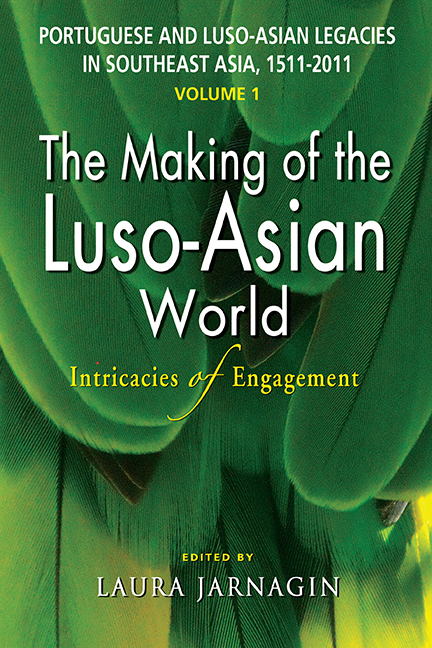Refine search
Actions for selected content:
140 results in Lectures, Workshops, and Proceedings of International Conferences

Poverty Reduction through Sustainable Fisheries
- Emerging Policy and Governance Issues in Southeast Asia
-
- Published by:
- ISEAS–Yusof Ishak Institute
- Published online:
- 21 October 2015
- Print publication:
- 17 November 2008

Industrial Restructuring in ASEAN and Japan
- An Overview
-
- Published by:
- ISEAS–Yusof Ishak Institute
- Published online:
- 21 October 2015
- Print publication:
- 01 January 1987

The Politics of Knowledge
-
- Published by:
- ISEAS–Yusof Ishak Institute
- Published online:
- 21 October 2015
- Print publication:
- 02 March 2009

The INF Treaty and Its Implications for Asia-Pacific Security
-
- Published by:
- ISEAS–Yusof Ishak Institute
- Published online:
- 21 October 2015
- Print publication:
- 01 January 1989

Managing Economic Crisis in Southeast Asia
-
- Published by:
- ISEAS–Yusof Ishak Institute
- Published online:
- 21 October 2015
- Print publication:
- 27 December 2010

Regional Economic Development in China
-
- Published by:
- ISEAS–Yusof Ishak Institute
- Published online:
- 21 October 2015
- Print publication:
- 17 August 2009

Australia-New Zealand and Southeast Asia Relations
- An Agenda for Closer Cooperation
-
- Published by:
- ISEAS–Yusof Ishak Institute
- Published online:
- 21 October 2015
- Print publication:
- 29 November 2004

Malaysia's Socio-Economic Transformation
- Ideas for the Next Decade
-
- Published by:
- ISEAS–Yusof Ishak Institute
- Published online:
- 21 October 2015
- Print publication:
- 06 August 2014

Malaysian Chinese
- Recent Developments and Prospects
-
- Published by:
- ISEAS–Yusof Ishak Institute
- Published online:
- 21 October 2015
- Print publication:
- 23 December 2011

Ruling Myanmar
- From Cyclone Nargis to National Elections
-
- Published by:
- ISEAS–Yusof Ishak Institute
- Published online:
- 21 October 2015
- Print publication:
- 20 December 2010

Reasserting the Rural Development Agenda
- Lessons Learned and Emerging Challenges in Asia
-
- Published by:
- ISEAS–Yusof Ishak Institute
- Published online:
- 21 October 2015
- Print publication:
- 04 July 2007

Inclusive, Balanced, Sustained Growth in the Asia-Pacific
-
- Published by:
- ISEAS–Yusof Ishak Institute
- Published online:
- 21 October 2015
- Print publication:
- 06 May 2010

The Environments of the Poor in Southeast Asia, East Asia and the Pacific
-
- Published by:
- ISEAS–Yusof Ishak Institute
- Published online:
- 21 October 2015
- Print publication:
- 12 November 2013

Conjunctures and Continuities in Southeast Asian Politics
-
- Published by:
- ISEAS–Yusof Ishak Institute
- Published online:
- 21 October 2015
- Print publication:
- 04 June 2013

Russia-ASEAN Relations
- New Directions
-
- Published by:
- ISEAS–Yusof Ishak Institute
- Published online:
- 21 October 2015
- Print publication:
- 30 October 2007

The Five Power Defence Arrangements at Forty
-
- Published by:
- ISEAS–Yusof Ishak Institute
- Published online:
- 21 October 2015
- Print publication:
- 01 November 2011

The Indonesian Economy
- Entering a New Era
-
- Published by:
- ISEAS–Yusof Ishak Institute
- Published online:
- 21 October 2015
- Print publication:
- 19 September 2011

Thailand's Economic Recovery
-
- Published by:
- ISEAS–Yusof Ishak Institute
- Published online:
- 21 October 2015
- Print publication:
- 01 June 2006

The 1930s and the 1980s
- Parallels and Differences
-
- Published by:
- ISEAS–Yusof Ishak Institute
- Published online:
- 21 October 2015
- Print publication:
- 01 January 1989

Portuguese and Luso-Asian Legacies in Southeast Asia, 1511–2011, vol. 1
- The Making of the Luso-Asian World: Intricacies of Engagement
-
- Published by:
- ISEAS–Yusof Ishak Institute
- Published online:
- 21 October 2015
- Print publication:
- 18 November 2011
